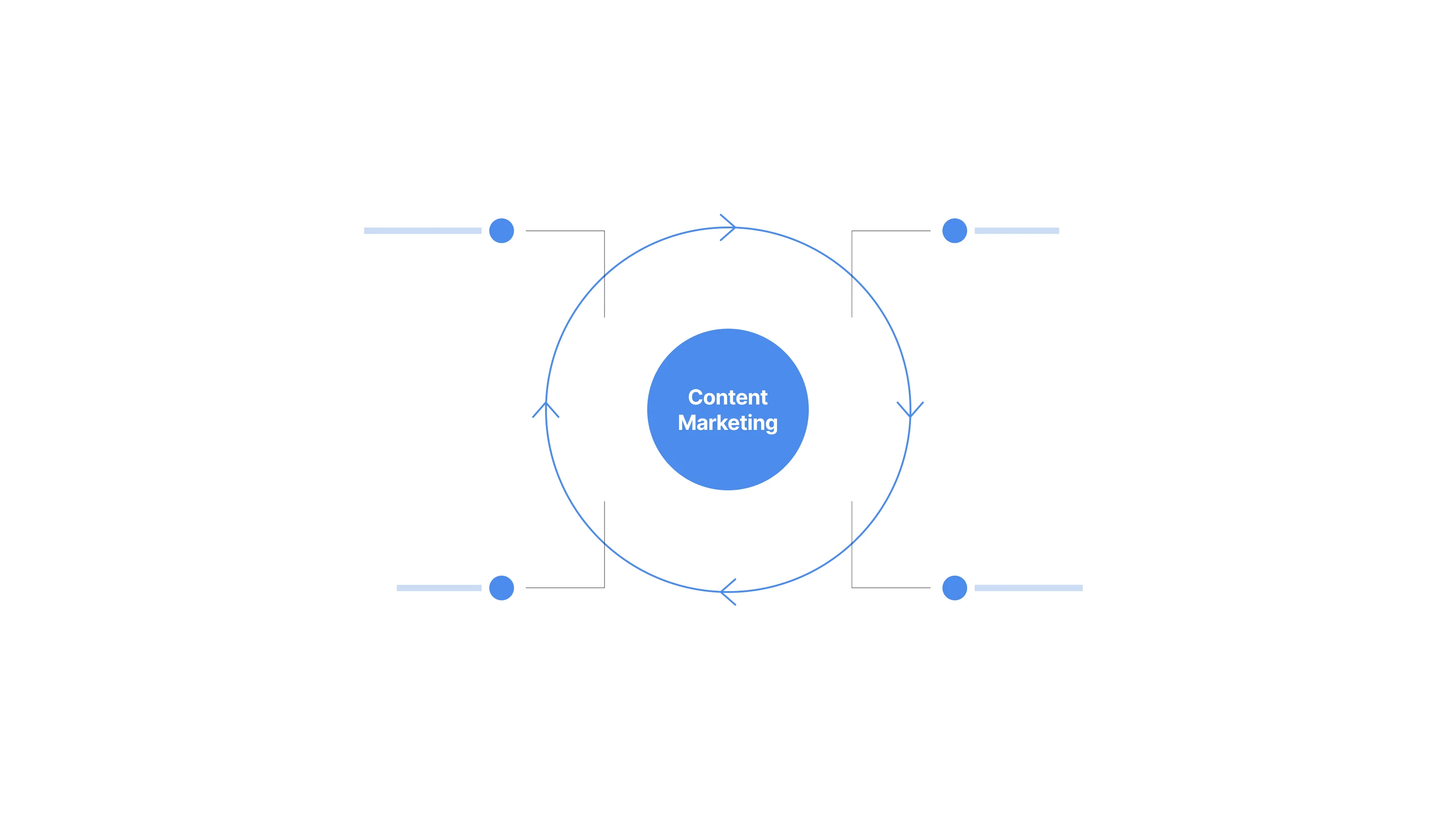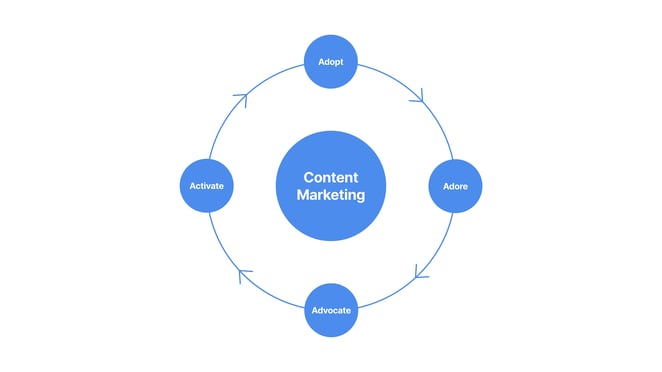Ultimate guide to B2B SaaS content marketing: Tips, tricks and topics
Content marketing attracts, educates and converts customers. Learn more about our B2B SaaS content marketing tips, tricks and topics.

The B2B SaaS content marketing flywheel is an important framework for understanding and optimizing the SaaS customer journey. It’s helpful for both understanding where your audience is in the funnel and what content they’ll find valuable. The content marketing flywheel will help you take your marketing strategy a step further, boosting your understanding and emphasizing the importance of content’s role in customer retention and advocacy.
Build a content strategy that drives brand awareness, nurtures leads, and boosts revenue.
The B2B SaaS content marketing flywheel emphasizes the cyclical process of building relationships and momentum through valuable content. The flywheel illustrates customer and prospect behavior and the continuous effects that strong content marketing can have on prospects. The B2B SaaS content marketing flywheel outlines how marketing must support the customer journey differently at each stage. The content marketing flywheel model is broken into four key elements:

The first stage in the B2B SaaS content marketing flywheel is adopt. In the adopt stage, businesses focus on creating content to attract their ideal customer profiles and encourage them to engage with their brand.
You can work closely with a technical SEO specialist or use other content marketing tools to improve your rankings and drive organic traffic using keyword research. Leveraging an SEO specialist is one of the most efficient ways to implement effective, relevant keywords into your content to help generate traffic and expand reach.
Types of content in this stage might be a blog post (one of my favorites), a video, social media content, or other types of content that potential customers may find valuable.
After you’ve attracted your target audience and potential customers, the next stage is to adore them by creating engaging and valuable content while developing a strong relationship with them.
I’ve noticed that retention is key in this stage of the B2B SaaS content marketing flywheel. The best way to keep customers engaged in this stage is to use personalized content and exclusive offers to show customers that your business values the relationship. After all, when your customers pay for your product or service, you want to make sure they stay as customers by holding onto them for the long term and encouraging additional purchases, add-ons, or higher-tiered services.
Existing customers who are happy with your service and their experience are more likely to engage in word-of-mouth marketing. I’ve seen this happen a number of times. When customers are satisfied and happy with a product, they become raving fans and can’t help but share their excitement and experiences with their peers.
Your customers may become brand advocates as they become more engaged and enamored with your business. That's why the third stage of the B2B SaaS content marketing flywheel is advocate, where businesses shift their focus to creating content that encourages their customers to share their positive customer experiences with others. This can be done with customer testimonials, social media shares, and other types of user-generated content. This word-of-mouth marketing is low-cost and sometimes basically free advertising, as your customers boast about how great your product is.
Accruing an audience of vocal fans is not only important for building your library of social proof, but increasing the number of people hearing about your solution from a trusted source such as a friend or colleague as opposed to a blog or site page. Word-of-mouth marketig is a uniquely effective channel and should be encouraged whenever possible.
The last stage of the B2B SaaS content marketing flywheel is activate, where you can engage in product-led growth by driving leads and referrals into the product experience. Here, you’ll want to focus on using the momentum created by engaged and loyal customers to attract even more customers. Using referral programs, influencer marketing, and other types of content, you can encourage current customers to bring in new business.
The big difference between the flywheel and the funnel is that the funnel shows conversions as linear with the singular goal of becoming a client. Whereas, the flywheel illustrates the cyclical nature of customer engagement, showing leads to clients to happy clients bringing new leads.
You can use the marketing funnel to create content strategies that take people who have never heard of you and are looking for solutions to their problems all the way to leads who are deciding to move forward with your solution.
The flywheel can be applied as a way to understand clearly what content needs to be delivered at each moment of a lead and client’s journey. I recommend using both to make sure you’re including everyone.
The B2B SaaS content marketing flywheel is an important strategy for developing a strong GTM strategy. I’ve witnessed the B2B SaaS content marketing flywheel in action, and I can say from firsthand experience that it’s a fantastic strategy for optimizing the buyer’s journey through the use of high-quality content.
By understanding and implementing the B2B SaaS content marketing flywheel, SaaS businesses can attract their target audience, engage and retain customers, encourage advocacy and word-of-mouth marketing, and drive leads and referrals for further growth. It’s a comprehensive strategy that helps companies grow and optimize the SaaS customer journey and maximize customer retention and revenue.
For more on creating valuable content for your audience, see our complete guide to B2B SaaS content marketing here.
Content marketing attracts, educates and converts customers. Learn more about our B2B SaaS content marketing tips, tricks and topics.
Syndicate your existing B2B or B2C content with 4 easy steps to increase your company's visibility, site traffic, and customer retention.
Learn about B2B conversion rate optimization( CRO) of your SaaS company website and how keep customers interested and engaged.
Be the first to know about new B2B SaaS Marketing insights to build or refine your marketing function with the tools and knowledge of today’s industry.